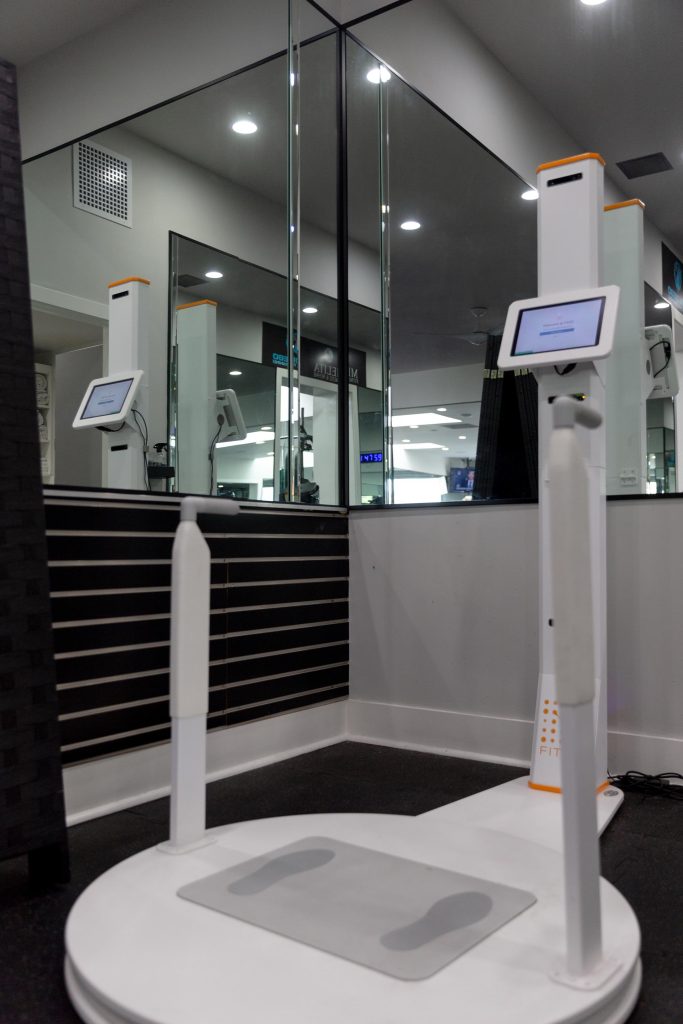The Fit3D Body Scanner captures and processes precise body measurements, body fat%, body shape wellness scoring, and posture/balance analysis. Your results are uploaded into your online account and you are emailed when results are complete. The scan itself takes approximately 40 seconds. Total appointment time between 5-15 minutes. Whether you’re looking to lose an inch on your waist or improve your posture, our scanner does both. Here is a snapshot of what your scan will look like.
Body Composition
Measurements of body fat percentage, muscle mass, and circumference provide much more detail as to where you are gaining and losing weight as opposed to standing on the scale and measuring weight.
Body weight can change as fat is lost or muscle is gained. Having an accurate measurement of how body composition is changing is not only more valuable information but much more motivating. Studies show that when progress is seen, there is an increase in motivation to keep going.
Circumference measurements can also tell us where your limbs are imbalanced and what areas need more focus.

Metabolic Rate
The Fit3D scan also provides your basal metabolic rate. This is a number based off your height, weight, age, gender, and muscle mass. It is the amount of calories burned at rest and accounts for most of your total daily energy expenditure, or how many calories burned throughout the day.
Total daily energy expenditure which accounts for the following:
- Basal Metabolic Rate
- Exercise Expenditure
- Non Exercise Energy Expenditure
- Thermic Effect of Food
Exercise, daily movement, and the energy your body uses to digest and absorb nutrients accounts for the rest of the daily energy expenditure. Understanding these numbers is helpful for creating a caloric deficit or surplus depending on whether your goal revolves around losing weight, gaining weight, or maintaining weight.
Posture
It is possible that you may see the cause of your back pain or neck pain by what is shown through our scan. See if your ankles, knees, hips, and shoulders are balanced or elevated. See if your neck shoots forward.
This give insight as to what muscles may be overactive and underactive in the body. Your trainer can work on these imbalances through exercises, SMFR, and stretching to relieve pain or prevent it.
